#frederico fellini
Text

Anita Ekbeg in La Dolce Vita
This was the image.
In middle school.
I was a film connoisseur. Still am.
My small town block buster only had 4 foreign films.
Off to the library I went.
Researching noir. French films. Das boot. The bicycle thief.
Then her. I had no idea what I was looking at.
I ripped this image out of a library book.
I didn't know what happened.
She unlocked something inside of me.
I was in the puberty phase where breasts were budding, yet shaving my legs was still forbidden.
But her. The long blonde hair, her breasts.
I had no one to tell this to.
The internet wasn't invented yet.
This photo did something to me. It was the most natural thing in the world. Pawing at my pussy and grappling my A cups. Writhing around in bed, pretending she was making me cum.
I didn't have the words yet. Not pussy or cum. I was just wet. Touching made me wetter. Fingers back and forth felt so good. Humping made it better.
Sometimes, friends would hug too tightly. I'd linger feeling their breasts against mine. Kissing them on the cheek. Feeling their hips rock. Then I'd try for another kiss.
I kissed one and fingered another. It didn't last long. No one wanted to keep playing.
Their loss.
Im thankful there is the internet now.
Thankful this place exists.
Where we all share the images that make us reach into our panties.
♡
#wlw nsft#sapphic#wlw smut#throuple#glg#lesbian kissing#sapphic yearning#lesbian#lesbian love#lesbianism#la dolce vita#frederico fellini#anita ekberg
65 notes
·
View notes
Text
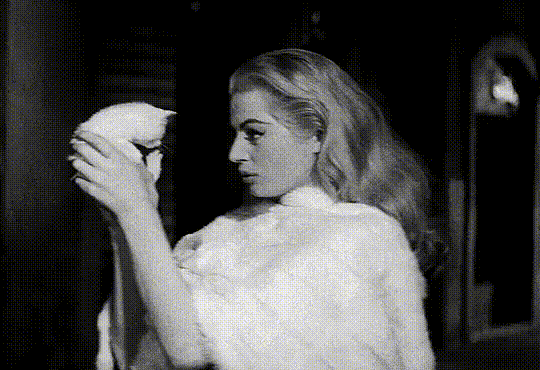
La Dolce Vita, Frederico Fellini, 1960
129 notes
·
View notes
Text

Genius is nothing other than the ability to retrieve childhood at will.
Charles Baudelaire
Is this all there is to art? A kind of solipsism? An inability to get past the egoism of infancy?
In Fellini’s masterpiece 8+1/2 the answer seems to lie with unraveling the mysterious phrase ‘Asa Miso Nasa’. Up front I will admit the film is not easy to follow as it doesn't really have a great plot and it does feel like episodic that gives it a disjointed look. But that doesn't mean there are no grand narratives underpinning it because there is.
The film, released in 1963, is about a movie director named Guido. His latest project has stalled before filming has even begun. Played by the incomparable Marcello Mastroianni, Guido is suffering from anxiety and creative block. It’s no wonder. He has sown chaos in his love life, and his creative indecision is producing near-mutinous levels of angst among actors, agents and crew. But all of this is mere surface tumult. Guido is haunted by something deeper. Something to do with . . . what? His parents, his childhood, the Catholic church? Feelings of shame and bliss? Death? All he has to answer his question is the phrase 'Asa Miso Nasa' to unlock answers but something he doesn't quite get.
In many ways ‘Asa Miso Nasa’ is a red herring, a sort of wild goose chase to nowhere. Like "Rosebud" in Orson Welles' Citizen Kane, or the madeleine in Marcel Proust's In Search of Lost Time, "Asa Nisi Masa" is a Hitchcockian ‘MacGuffin’ - a convenient object upon which the plot turns. In Fellini’s film it’s used as a gateway to crucial memories of the central character - even though it is itself peripheral to the central story.
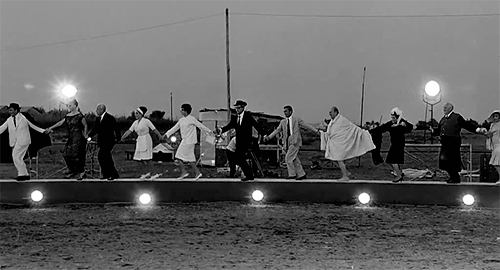
Fellini’s answer is, I think, with his apprehension that the urge to make art is connected to a time in our lives when we were lifted and carried about, lowered into baths, tucked into bed; when we first used our lips to suck and to kiss; when we flapped our arms and kicked our legs; or when we danced without unrestrained joy. In other words, when we felt ourselves to be unique in our childhood.
Why should that be so? James Fenton, the great poet and critic, provided a plausible answer, even if he was writing about something else.
“Because,” wrote Fenton - and here comes the part that Guido, the anxious, grown-up filmmaker, must reckon with - “there follows the primal erasure, when we forget all those early experiences, and it is rather as if there is some mercy in this, since if we could remember the intensity of such pleasure it might spoil us for anything else. We forget what happened exactly, but we know that there was something, something to do with music and praise and everyone talking, something to do with flying through the air, something to do with dance.”
Something Fellini-esque, you might say.
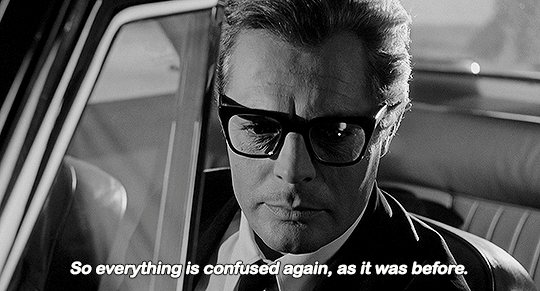
Art is more than a pathetic desire to revert to childhood bliss. It’s true that the self-centredness of great artists - and by no means just male artists - is bound up with their desire to find again the treasure in the corner of the childhood bedroom, and the only sound is the children’s chant: “Asa Nisi Masa.” But what do all artists want if not to be understood.
But here we run into a problem. For all the attention artists seek, there is a kind of shame for them in being “understood.” Being “explained” is never more than an inch from being “explained away,” rendered redundant, losing the vital quality that makes one unique. Their egos can't handle that. So we can never judge beauty in art if we limit ourselves to just the life and meaning of an artist. If anyone ever says they don't like this art because of this artist was not nice or was abusive or held questionable beliefs then they are either illiterate fools or as shallow as the unfunny Hannah Gadsby is about Picasso.
There is much, much more to art, which, at its best, is always about transcending solipsism and reaching for beauty.
For Roger Scruton, the great philosopher of aesthetics, “Beauty is an ultimate value - something that we pursue for its own sake, and for the pursuit of which no further reason need be given. Beauty should therefore be compared to truth and goodness, one member of a trio of ultimate values which justify our rational inclinations,” Scruton developed a largely metaphysical aspect to understanding standards of art and beauty. For Scruton, the purpose of art is to save the sacred - the beautiful.
For Scruton, beauty is wrapped up in his view of the sacred. The sacred begins with the fundamental nature of man as an end, not merely a means - here childhood memories are a means not an end. Scruton then, is able to apply this concept of ends to beauty. The ability to place meaning on things is what gives man his sacredness and makes him an end unto himself. The sacred gives us a glimpse into eternity, and provides man with the cure to his temporal misery. In a manner almost Platonic, Scruton describes the sacred as pulling man out of the world of things and into the transcendental realm. It is an attempt not so much to find a glimpse of our childhood so much as to find Eden again, even if only in a finite temporal way, and to “prefigure our eternal home.”

Thus, it is this sacred nature of ends, not means, that Scruton puts forth in his understanding of beauty. In this Scruton echoes those philosophers of that past. Some like the Greek philosopher, Plotinus, beauty is seen as an ultimate value, pursued for its own sake, and the way in which the “divine unity makes itself known to the soul.”
Beauty is the glue that holds cultures together. It transcends individual places and ages. Light shining through stained glass in the Notre-Dame Cathedral, the face of Mary in Michelangelo’s La Pietà, a Bach orchestral suite, or a Frederico Fellini film (and none more so than the playful but sublime 8+1/2). Our experiences of these things connect us to the experiences of so many others over the decades and centuries since their creation. The beauty links us with a sense of profoundness and awe.
#baudelaire#charles baudelaire#quote#fellini#film#cinema#movie#art#aesthetics#beauty#childhood#memory#platonic#roger scruton#scruton#plotinus#eden#sacred#james fenton#frederico fellini#italian cinema#hannah gadsby is not funny#arts#culture
139 notes
·
View notes
Text
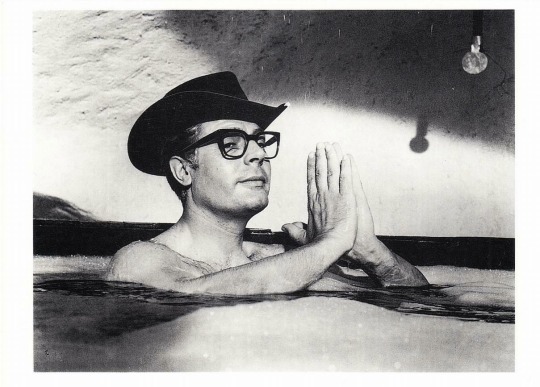
42 notes
·
View notes
Text

Marcello Mastroianni on the set of Federico Fellini’s "La Dolce Vita" in Rome, 1959
#marcello mastroianni#frederico fellini#50s movies#50s icons#italian film#aesthetic#vintage#old school cool#style#on set photos#la dolce vita
46 notes
·
View notes
Text




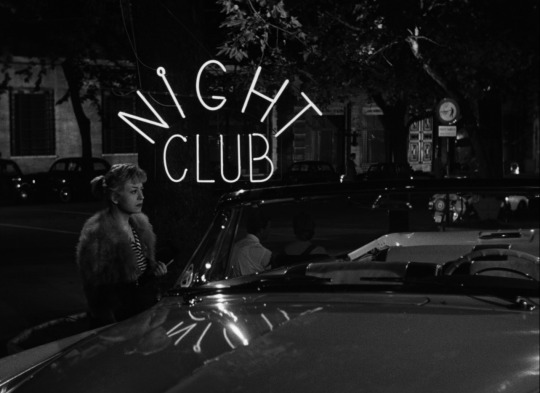
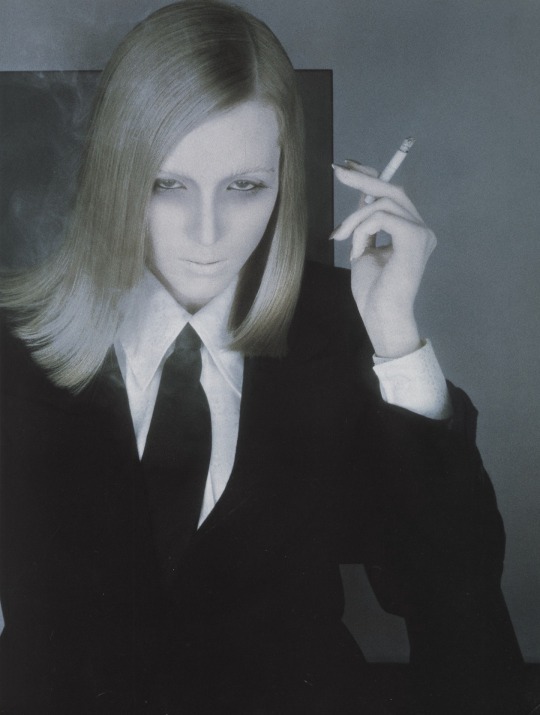

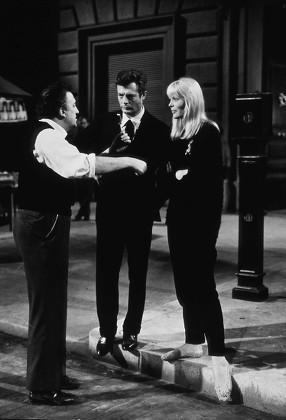


#serge lutens#a la nuit#christopher sheldrake#frederico fellini#nights of cabiria#la dolce vita#8 1/2
7 notes
·
View notes
Text

Mr. E Gallery 'À Deriva' (Fellini-Pierre&Gilles) (02-23)
#mr. e gallery#digital art#edmond simpson#giulietta massina#frederico fellini#pierre et gilles#farida khelfa
42 notes
·
View notes
Text

Federico Fellini and Claudia Cardinale, during the filming of '8½' (1963).
5 notes
·
View notes
Text
Directors and their chairs.

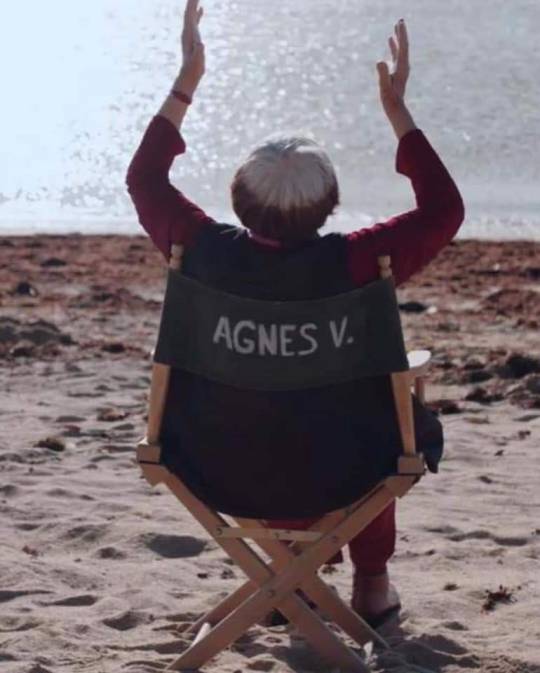


#tarkovsky#agnès varda#francis ford coppola#frederico fellini#andrei tarkovsky#movies#poet#poetry#cinema#books & libraries#book qoute#art#qoutes
14 notes
·
View notes
Text
oscar 😈
C'EST LE DIABLE EN PERSONNE, IL EST DÉTESTABLE (he is so fiiiine)


son p'tit sourire narquois et moi j'tombe dans le panneau... j'adore ce film tout du moins.
#les nuits de cabiria#1957#frederico fellini#quel enfoiré ce personnage#ça n'empêche pas de tombé sous ses charmes hein#françois périer
10 notes
·
View notes
Photo

The visionary is the only true realist.
- Frederico Fellini
Federico Fellini with Ingmar Bergman and Liv Ullmann in Rome, 1969.
#fellini#frederico fellini#quote#film director#film#cinema#movie#visionary#realism#ingmar bergman#liv ullmann#arts#culture
79 notes
·
View notes
Photo



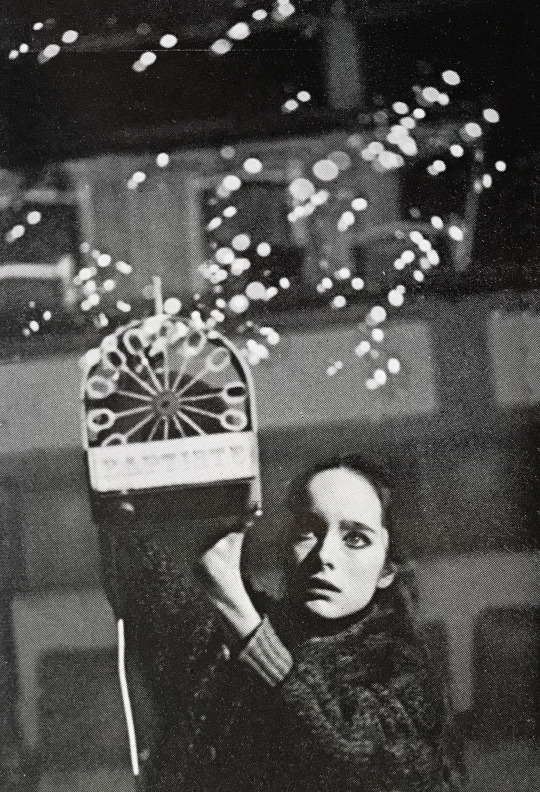
In 1970, Frederico Fellini explored his fascination with clowns. I Clowns (or The Clowns) was a work of docufiction made on this subject, which was made for RAI television and for the cinema screen. These images are from issue #46 of cinematografia magazine published by Cappelli in 1972 and edited by Renzo Renzi -- Fellini TV, Block Notes Di un Regista (I Clowns)
https://www.baumanrarebooks.com/rare-books/fellini-federico/i-clowns/111798.aspx
#frederico fellini#renzo renzi#rai television#docufiction#mockumentary#clowns#1970s television#1970's cinema#italian cinema#italian humour
5 notes
·
View notes
Text

64 notes
·
View notes
Photo

2 notes
·
View notes

